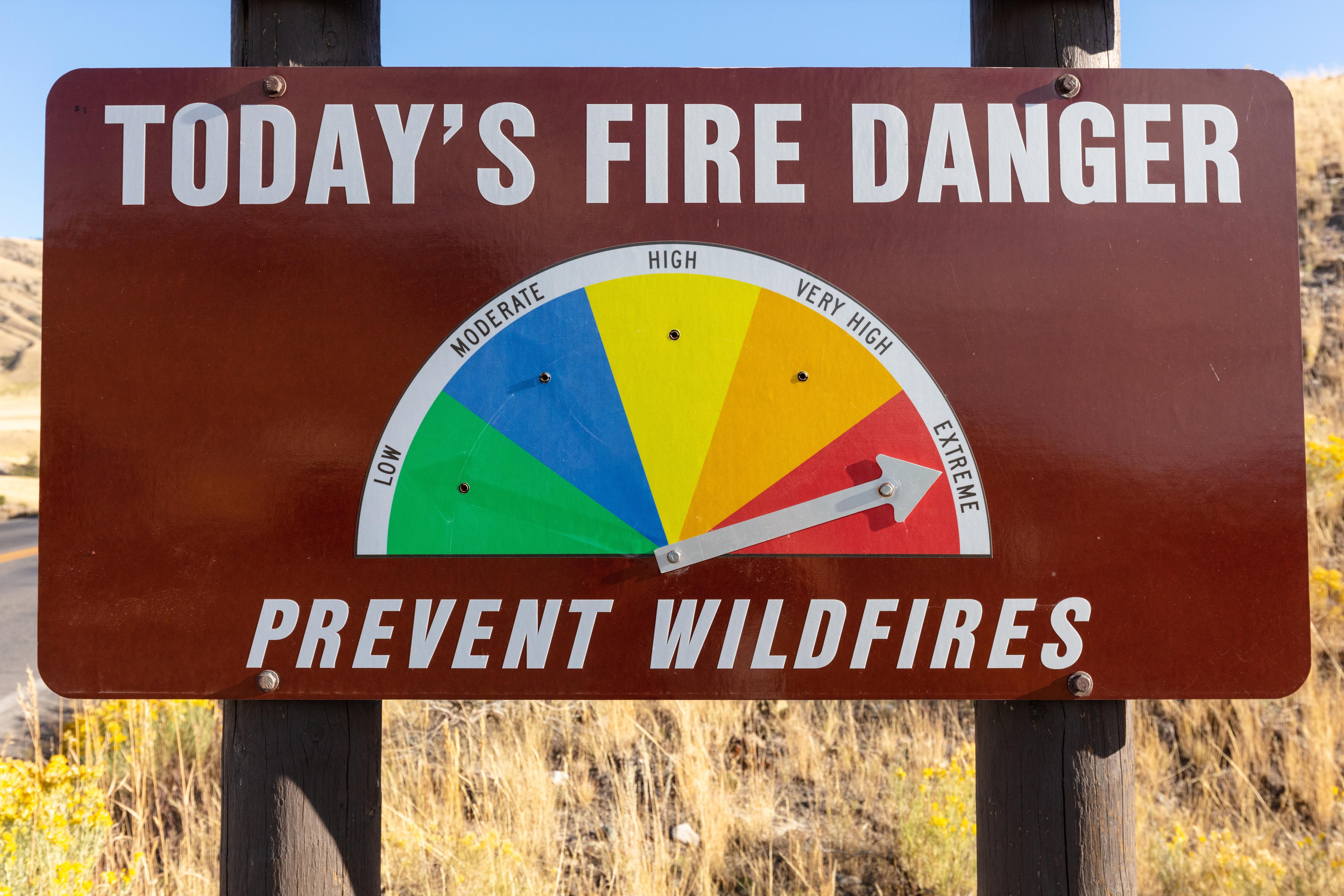
Information on public fire danger signs comes from the Nation Fire Danger Rating System, which is being updated for the first time in more than four decades.
Jacob Frank, NPS
A tool forest managers use to determine the level of fire danger is getting its first update in more than 40 years.
The National Fire Danger Rating System uses information like temperature, humidity and wind to let firefighters know how wildfire will behave.
“It allows us to combine a lot of information to produce a very simple categorical scale of fire weather conditions for a particular place on a particular day,” said U.S. Forest Service researcher Matt Jolly.
Jolly helped develop the update for the system, which will be available for fire agencies, public lands managers and others to access in time for fire season this year.
He says the new system will be automated. Previously it required a human presence to take readings at weather stations scattered across the country. In addition, the science behind the calculations of fire danger has been updated.
“In the future, even now, we can do things that we haven’t been able to do before – like look at the hour to hour changes in fire danger,” Jolly said.
The system is also used to set fire danger signs at the entrance to Northwest campgrounds, national forests and some towns. The signs usually only reflect certain risk factors, like temperature and fuel moisture that usually don’t change dramatically on a daily basis.
“The public won’t see any changes to those Smokey Bear iconic (fire danger) portal signs. You know you have Smokey there with green and orange and red, laying out fire danger. That system will be the same. It’s just the science behind it will be much better,” said Holly Krake, a spokesperson for Washington’s Okanogan-Wenatchee National Forest.
The National Forest is adopting the new system in time for the coming fire season, as are the Central Washington Interagency Communications Center and Northeast Washington Interagency Communications Center, which help coordinate wildfire response.
Other National Forests in the Northwest, like the Rogue River-Siskiyou in southwest Oregon and Wallowa-Whitman in northeast Oregon, are waiting another year before changing over.
“The goal is to have all operating areas in the Pacific Northwest under the new system in 2020,” said Forest Service spokesperson Stephen Baker in an email statement.
The National Fire Danger Rating System is just one of many tools used by forest and fire managers to assess conditions on the ground.
“(NFDRS is) not designed to make a decision for you in a little black box,” said Ruth Johnson, a fire planner at Rogue River-Siskiyou National Forest.
She says if the information provided through the system doesn’t mesh with local observations, managers will adjust to provide the most accurate assessment of fire danger as possible.
Editor’s note: Reporting for this story was supported by the Institute for Journalism and Natural Resources.

